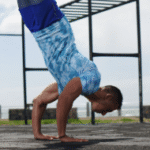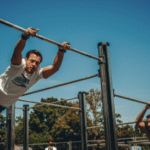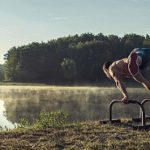10 Tips for Maximizing the Benefits of Sauna
10 detailed tips for maximizing the benefits of your sauna experience, tailored for users in the USA. Following these guidelines can help enhance relaxation, promote recovery, and ensure safety.
- Hydrate, Hydrate, Hydrate (Before, During, and After)
Why it Maximizes Benefits: Saunas induce significant sweating, leading to fluid loss. Being well-hydrated before entering ensures your body can sweat efficiently (a primary mechanism for heat dissipation and perceived cleansing) without becoming dangerously dehydrated. Dehydration can cause dizziness, headache, and fatigue, negating the relaxing benefits.
How to Implement: Drink plenty of water throughout the day leading up to your sauna session. Consider bringing a water bottle (non-metallic, non-glass ideally, or kept just outside the hot room) to sip between sauna rounds if doing multiple cycles, or immediately upon exiting. Replenish fluids thoroughly after your session – water is usually sufficient, but if you had a very long or intense session with heavy sweating, consider adding electrolytes.
USA Context: With easy access to various beverages, prioritize plain water. Avoid sugary drinks, caffeine, or alcohol for hydration around sauna use.
- Shower Before Entering
Why it Maximizes Benefits: Rinsing off beforehand removes surface dirt, oils, lotions, and perfumes. This allows your pores to open and sweat more freely and cleanly. It also prevents lotions from potentially causing skin irritation under heat or perfumes from becoming overpowering in the enclosed space.
How to Implement: Take a quick, cleansing shower using mild soap right before you enter the sauna room.
USA Context: This is standard etiquette in most US gyms, spas, and public sauna facilities, promoting hygiene for all users.
- Avoid Heavy Meals and Alcohol Beforehand
Why it Maximizes Benefits: Digesting a large meal diverts blood flow to your digestive system, potentially reducing the beneficial circulatory effects of the sauna in peripheral tissues and making you feel sluggish or uncomfortable. Alcohol is dehydrating and impairs judgment and the body’s ability to regulate temperature, making sauna use after drinking extremely risky (increases risk of fainting, heatstroke, cardiovascular events).
How to Implement: Allow at least 1-2 hours after a moderate meal before using the sauna. Avoid alcohol completely before and during sauna use.
- Start Slow & Listen Intently to Your Body (Duration & Temperature)
Why it Maximizes Benefits: Pushing yourself too hard, especially initially, can lead to overheating, dizziness, or nausea, ruining the experience and potentially being unsafe. Acclimatizing gradually allows your body to adapt and reap the benefits comfortably. True relaxation occurs when you feel safe and comfortable, not stressed by excessive heat or duration.
How to Implement:
Beginners: Start with shorter sessions (5-10 minutes) at a moderate temperature (e.g., 150-170°F / 65-75°C in a traditional sauna).
Progression: Gradually increase duration as you become more accustomed, typically aiming for sessions of 10-20 minutes. Some experienced users may go longer, but always prioritize how you feel.
Listen: Pay close attention to your body’s signals. If you feel lightheaded, dizzy, nauseous, or uncomfortably hot, leave the sauna immediately, regardless of the timer.
USA Context: Sauna temperatures can vary widely in public facilities. Find a level that feels therapeutic, not punishing.
- Understand and Choose Your Sauna Type (If Options Exist)
Why it Maximizes Benefits: Different saunas offer slightly different experiences and potential benefits:
Traditional Finnish Sauna: High heat (typically 170-195°F / 75-90°C), low humidity. Water (löyly) can be ladled onto hot stones for brief bursts of steam, intensifying the heat and humidity temporarily. Great for deep sweating and a traditional feel.
Infrared Sauna: Uses infrared light to heat the body directly at lower ambient temperatures (typically 120-150°F / 50-65°C). Often preferred by those sensitive to high heat, potentially offering deeper tissue penetration for pain relief.
Steam Room (often confused with sauna): Lower temperature (around 110-120°F / 43-49°C) but nearly 100% humidity. Beneficial for respiratory congestion and skin hydration.
How to Implement: If you have access to different types (common in larger US gyms or spas), experiment to see which you prefer and which aligns best with your goals (e.g., deep relaxation, muscle soreness, respiratory ease).
- Focus on Relaxation and Mindfulness During Your Session
Why it Maximizes Benefits: The sauna provides a unique environment to disconnect and de-stress. Actively focusing on relaxation amplifies the mental health benefits. Ruminating on worries or distractions diminishes the effect.
How to Implement: Sit or lie down comfortably. Close your eyes. Focus on slow, deep breathing (inhale through the nose, exhale through the mouth). Pay attention to the sensation of warmth on your skin. Try a simple body scan meditation. Avoid bringing phones or engaging in stressful conversations inside the sauna (if with others, keep conversation light or enjoy companionable silence).
USA Context: Use the sauna as a deliberate antidote to the often high-stress, fast-paced American lifestyle.
- Consider Multiple Rounds with Cool-Downs (Traditional Approach)
Why it Maximizes Benefits: The traditional Finnish practice often involves cycles of heating up in the sauna (10-15 minutes), followed by a cooling-down period (cool shower, stepping outside, or even a cold plunge/snow roll historically!), and then repeating the cycle 2-3 times. This alternation between hot and cold (similar to contrast therapy) is believed to enhance circulatory benefits, boost alertness, and deepen the relaxation response after the final cool-down.
How to Implement: After your first sauna session, exit and cool down using a cool shower or simply resting at room temperature until you feel comfortable (usually 5-15 minutes). Then re-enter the sauna for another round if desired.
USA Context: With the rising popularity of cold plunges in the US, many facilities and home setups now allow for this explicit hot/cold contrast, amplifying potential benefits.
- Cool Down Gradually Post-Sauna
Why it Maximizes Benefits: Allowing your body temperature to return to normal gradually after exiting the final sauna round helps prevent dizziness or lightheadedness that can occur with abrupt temperature changes. It allows the cardiovascular system to readjust smoothly.
How to Implement: Sit or rest quietly at room temperature for 5-10 minutes after your final exit. Take a cool or lukewarm shower rather than immediately jumping into a very cold or very hot one.
- Rehydrate Thoroughly After Cooling Down
Why it Maximizes Benefits: You need to replace the fluids and potentially some electrolytes lost through sweating to avoid dehydration headaches, fatigue, and muscle cramps, allowing you to fully enjoy the post-sauna relaxation.
How to Implement: Drink ample amounts of water after your cool-down shower. If you sweat very heavily or had a long session, consider a beverage with electrolytes or a small salty snack. Continue hydrating throughout the rest of the day.
- Rest, Integrate, and Be Consistent
Why it Maximizes Benefits: The relaxation effects of the sauna can be prolonged by allowing for some quiet rest time afterwards, rather than immediately rushing into demanding activities. Consistency is key for long-term benefits; regular sauna use (e.g., 1-3 times per week, depending on tolerance and goals) is generally more beneficial than infrequent, overly intense sessions.
How to Implement: If possible, schedule your sauna sessions when you have some downtime afterward. Pay attention to how your body feels in the hours and day after – better sleep, reduced soreness, calmer mood? Use this feedback to tailor your routine. Aim for consistency that fits realistically into your lifestyle.
By following these tips, you can safely enhance your sauna sessions, maximizing the potential benefits for relaxation, recovery, and overall well-being within the context of your life in the USA. Always prioritize safety and listen to your body’s signals.

10 Tips for Maximizing the Benefits of Sauna
Route
Calisthenics Gym Houston Functional Bodyweight Training
Secondary phone: (346) 483-3195
Email: info@calisthenicsclubhouston.com
URL: https://calisthenicsclubhouston.com/
Monday 6:00 AM - 7:00 PM Tuesday 6:00 AM - 7:00 PM Wednesday 6:00 AM - 7:00 PM Thursday 6:00 AM - 7:00 PM Friday 12:00 PM - 6:30 PM Saturday 9:45 AM - 12:00 PM Sunday 3:00 PM - 5:00 PM





